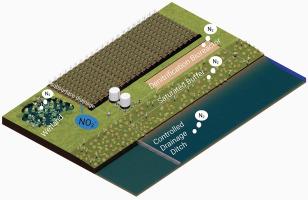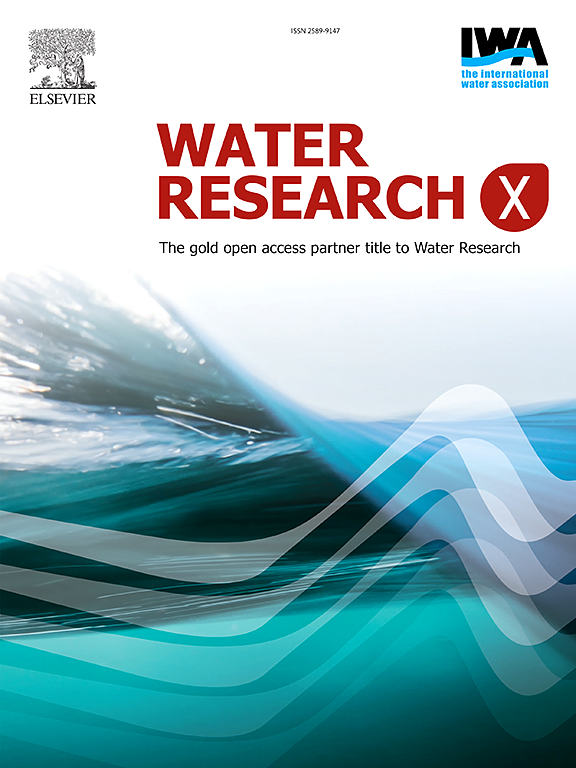Bioremediation of agricultural nitrate pollution – challenges and opportunities
IF 8.2
2区 环境科学与生态学
Q1 ENGINEERING, ENVIRONMENTAL
引用次数: 0
Abstract
Agriculture is the major cause of nitrogen pollution worldwide, leading to eutrophication in the surrounding and downstream rivers, lakes, and oceans. Nitrogen runs out from the field mostly in the form of nitrate where subsurface drainage is installed, which is common in areas with poorly drained soils such as the U.S. Midwest and northern Europe. Nitrate contamination in groundwater wells can also cause human diseases, and therefore, is a serious public health concern. Agricultural drainage displays distinct characteristics from municipal wastewater and animal manure, which include high nitrate, low ammonium, and low organic carbon concentrations as well as low temperature. The remediation technologies also need to be deployable in rural settings, low cost, and have minimum impacts on agricultural production. In this review article, we first summarize the challenges associated with agricultural nitrate pollution. We also briefly summarize microbial nitrogen transforming reactions that are potentially useful for nitrate bioremediation. We then critically evaluate currently available nitrate remediation technologies. Because bioremediation is much less expensive than physical and chemical treatments, we mostly focus on bioremediation technologies, including wetlands, denitrification bioreactors, saturated riparian buffers, controlled drainage, and controlled drainage ditches. Current bioremediation technologies exhibit substantial variability in performance when implemented at field scale. This review discusses recent advances and emerging strategies to enhance nitrate removal under challenging field conditions, including bioaugmentation, biostimulation, and other novel technologies. Looking forward, the effective management of agricultural subsurface drainage will likely depend on the integration of multiple conservation practices to achieve targeted nitrate reduction goals.

农业硝酸盐污染的生物修复——挑战与机遇
农业是全球氮污染的主要原因,导致周围和下游河流、湖泊和海洋的富营养化。在地下排水系统安装的地方,氮主要以硝酸盐的形式从农田中流失,这在美国中西部和北欧等排水土壤较差的地区很常见。地下水井中的硝酸盐污染也会引起人类疾病,因此是一个严重的公共卫生问题。城市污水和动物粪便的农业排水具有高硝酸盐、低铵、低有机碳浓度和低温的明显特征。补救技术还需要在农村环境中部署,成本低,对农业生产的影响最小。在这篇综述文章中,我们首先总结了与农业硝酸盐污染相关的挑战。我们还简要总结了微生物氮转化反应对硝酸盐生物修复的潜在作用。然后,我们批判性地评估目前可用的硝酸盐修复技术。由于生物修复比物理和化学处理要便宜得多,我们主要关注生物修复技术,包括湿地、反硝化生物反应器、饱和河岸缓冲层、控制排水和控制排水沟。目前的生物修复技术在实地实施时表现出很大的性能差异。这篇综述讨论了在具有挑战性的野外条件下提高硝酸盐去除的最新进展和新兴策略,包括生物增强、生物刺激和其他新技术。展望未来,农业地下排水的有效管理可能取决于多种保护措施的整合,以实现有针对性的硝酸盐减少目标。
本文章由计算机程序翻译,如有差异,请以英文原文为准。
求助全文
约1分钟内获得全文
求助全文
来源期刊

Water Research X
Environmental Science-Water Science and Technology
CiteScore
12.30
自引率
1.30%
发文量
19
期刊介绍:
Water Research X is a sister journal of Water Research, which follows a Gold Open Access model. It focuses on publishing concise, letter-style research papers, visionary perspectives and editorials, as well as mini-reviews on emerging topics. The Journal invites contributions from researchers worldwide on various aspects of the science and technology related to the human impact on the water cycle, water quality, and its global management.
 求助内容:
求助内容: 应助结果提醒方式:
应助结果提醒方式:


